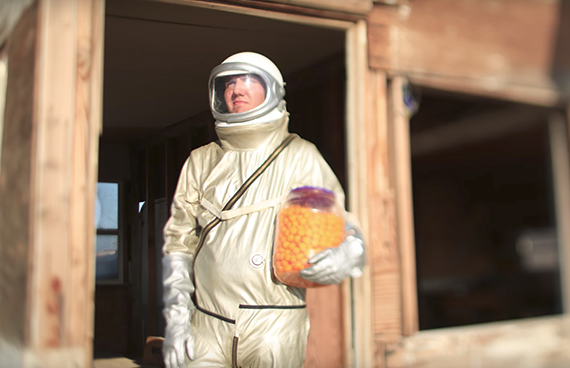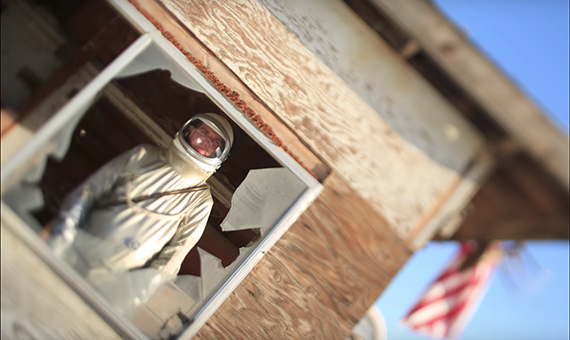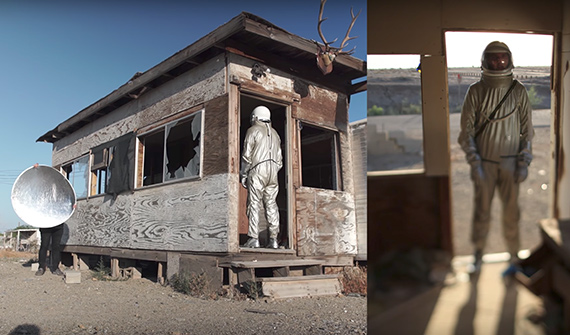For great lighting, you don’t have to relegate yourself to the studio. As seasoned photographer Jay P. Morgan demonstrates, it’s possible to get some really breathtaking results with direct sunlight—if you implement the right techniques:
This shoot, on the Southern California shore of Bombay Beach, utilizes the blaring sun as a means of implementing a twist on the oft replicated abandoned building photograph. Morgan’s strategy is simple—just as a commercial image maker might use an artificial key light to cultivate a mood, his team instead employs the sun to build the shot.
The best way of harnessing the sun is to experiment and augment until you’re totally satisfied. Since the light source itself is out of the photographer’s control, it becomes necessary to move the camera and the subjects to create the best end product possible.
As you can see, the differences in taking just a few side steps can be drastic.

Allowing the sun to hit the subject’s front creates a flat, even light. Morgan notes that the result it produces is similar to that of a butterfly light. An assistant with a reflector just outside of the frame bounces the light to eliminate any potentially unflattering shadows.
A 90 degree shift puts the subject partially in shadow, creating a sort of split light effect. This creates a more contrasty look that accentuates the folds of the subject’s costume. Again, a reflector is used to bring just enough light to the model’s face to bring out some defining details.
It’s also possible to utilize the sun as a backlight, reducing subjects to little more than a silhouette. The reflective spacesuit picks up some of the light bounced by the assistant’s reflector to bring in some of the foreground. However, in many scenarios letting everything fall into darkness to create a more graphic image can be visually appealing.
There’s no right or wrong way to go about using the sun in a photograph. Like any light source, it can interact with the environment in countless ways. However, this short lesson provides a guideline on achieving effects with little more than the natural resources at hand. Don’t limit yourself in the field; chances are, a slight change in perspective will get you results that you may not have even taken into consideration.
“A good photographer, a good DP will find something that works eventually. You keep working it until you find something interesting.”
Like This Article?
Don't Miss The Next One!
Join over 100,000 photographers of all experience levels who receive our free photography tips and articles to stay current:








Leave a Reply